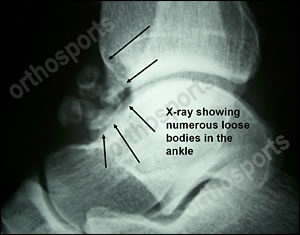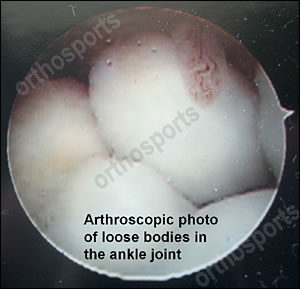Inside This section
Overview
Ankle sprains are extremely common in the general community. It is felt that the incidence of ankle ligament injuries is one per 10,000 of population per day, i.e. 400 ankle sprains in Sydney each day.
The most commonly injured ligaments are the ligaments on the outside (anterior talofibular and calcaneo fibular ligament).
Patients will characteristically invert the ankle on uneven ground, treading in a pothole or on a slippery surface. The ankle is more unstable in plantarflexion and therefore sprains are more likely to recur when a patient is going downhill or down stairs.
Typically the patients hear a “pop” or feel a “crack” in the ankle and the ankle swells up dramatically. They are unable to walk.
In our opinion, x-rays are mandatory to exclude fracture, although there is a protocol from Canada which suggests that x-rays are not necessary in the acute situation – we always x-ray.
Initially patients are managed with rest, ice, compression and elevation. 85% of ankle sprains will resolve uneventfully. 10%-15% of patients get ongoing symptoms, which are a combination of pain, stiffness, swelling or instability.
In these patients, plain x-rays often are normal and therefore one has to further investigate the ankle to exclude damage to the articular cartilage, tears of tendons, remote fractures not seen on x-ray, or lesions outside the ankle.
Ankle arthroscopy is useful in the treatment of the chronic ankle sprain where a scar tissue band in the ankle may be present known as a menisciod lesion – see slide below.

In this situation, we find the MRI scan to be most useful in good hands.
Recommended Treatment
Acute repair of ankle ligaments is no longer considered necessary as the majority of patients will stabilise non surgically and those that do not stabilise non surgically can be fixed later at no real disadvantage.
The surgery to correct lateral ligaments involves one night in hospital, ten days in plaster, non weight bearing and four weeks in a walking splint. This surgery is accompanied by swelling for six months and is successful 85% of the time. Most patients report good resolution of symptoms, as long as their articular cartilage is in good condition. Long term pain is usually not an issue.
This patient had numerous loose bodies in his ankle – see x-ray below…

…and these were readily removed arthroscopically – see slide below…

